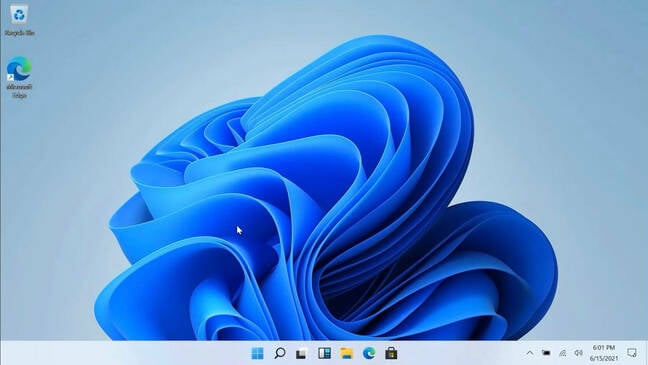This article is more than 1 year old
OpenShell has been working on a classic replacement for Windows 11's Start menu
It's still early days, though
There is a very preliminary FOSS Start menu replacement for Windows 11 – but it's not quite there yet.
Windows 11 is an interesting release, given that Microsoft once said there wouldn't be any more versions. One might be forgiven for thinking that to reverse that major decision, it would have to be something pretty epochal… but it isn't. It is a bit prettier and does polish off some of the rough edges of Windows 10, but it's mostly a facelift. In one way, it's a functional downgrade as there's a big loss in the customisability of the Taskbar and Start menu, which are the centres of Windows' UI.
Help is coming, though, in the form of OpenShell. OpenShell is the continuing development of the old Classic Shell for Windows 8. Its developers have been discussing the impact of the new Windows, and a new build has snuck out that will install and run.
It hasn't been promoted to a full release yet, so you'll have to hunt. On the main OpenShell GitHub page, under Releases on the right hand side, click "+ 7 releases". This should take you to a new page, and under Periodic update at the top, a new build is lurking. Click "Assets" and there is OpenShellSetup_4_4_169.exe.
We tried it, and with some limitations, it does work. Until we picked a custom button, it only opened in response to the Windows key; clicking Microsoft's Start button got Microsoft's Start menu. A custom button does what you'd expect, but the snag is that they don't line up with the integrated button. The Aero version is too small and the Microsoft button peeks out from underneath, whereas the Classic button is too big and overlaps the Search button.
We also experimented with the tweaks that modify Explorer's sidebar, and they work well – but they don't pick up Windows' dark mode, which looks weird. We just disabled dark mode. (While you're in there, you can disable the Chat button, too. Unless you use Teams, in which case you have our sympathies.)
- Saved by the Bill: What if... Microsoft had killed Windows 95?
- Running Windows 10? Microsoft is preparing to fire up the update engines
- First they came for Notepad. Now they're coming for Task Manager
- Microsoft patches the patch that broke VPNs, Hyper-V, and left servers in boot loops
But by all means give OpenShell a try, leave some feedback, and encourage the team in its efforts.
It's a proprietary OS, and for now, a proprietary tool remains the more complete solution. Stardock's Start11 rides to the rescue, as Start10 did seven years before it. There's a free one-month demo to give you a taste. As you might anticipate, here on The Reg's FOSS desk, we try to use Windows as infrequently as is possible, but Start11 does help.
What neither offering can help with just yet is moving the taskbar. Ever since Windows 95, it's been possible to arrange this vertically – and since Windows puts scrollbars on the right, on the left edge is the best place. It's not just me. Others agree.
Xfce, LXQt, LXDE, and PIXEL all do vertical taskbars just fine. Cinnamon makes a noble effort, and it works, if not perfectly – as it does in UKUI and the Deepin desktops. It breaks fairly badly on MATE and KDE, though. Sadly, today the functionality of Microsoft's own desktop has dropped lower than the FOSS desktops it inspired.
Come back, LiteStep. All is forgiven. ®

